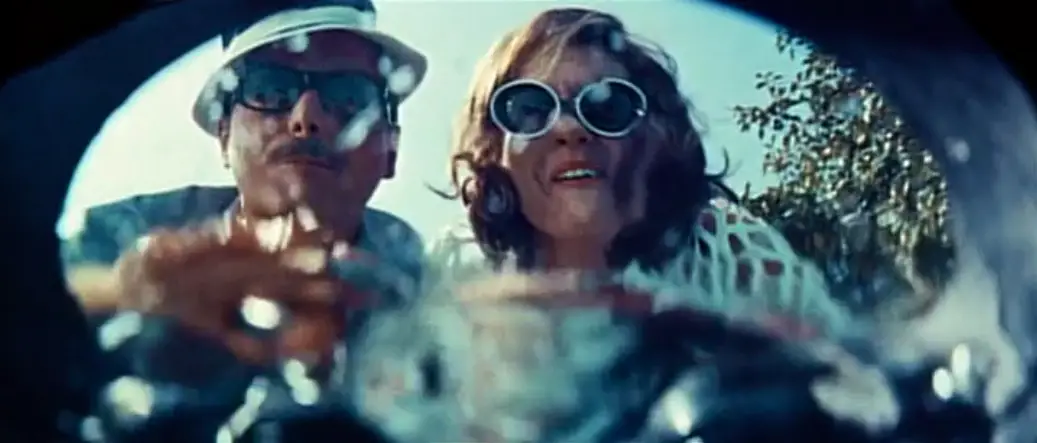
The Graduate was originally a novella written by Charles Webb in 1963 before Mike Nichols made it into the hit 1967 film. The story follows Ben, a bright, young college graduate who returns home from school trapped by his parents’ expectations, something that you never could relate to, right? Searching for an escape from his worries, Ben begins an affair with his parents’ friend Mrs. Robinson, before he eventually falls in love with her daughter, Elaine. Before I get into the themes and symbolism in this movie, I want to discuss Mike Nichols’ innovative filmmaking.
Films are usually edited to follow a conversation. We move from one person’s point of view to another. However, this film is put together to follow the inner thoughts and feelings of Ben and the pressure he feels, and I can guarantee the techniques used will make you feel as awkward and uncomfortable as Ben. For example, this image is from the scene wherein Mrs. Robinson first tries to seduce Ben, and he is quite uncomfortable. He is fidgety, he avoids being close to her, and he tries to leave at every possible opportunity. He cannot escape though, because Mrs. Robinson is such a powerful and intimidating personality. This shot symbolizes many things. First, Mrs. Robinson’s leg is a symbol of her sexuality, which is used a motif throughout the film (as seen in the poster), and is shown to be trapping Ben by surrounding him in the frame. Not only is her leg surrounding him, but it is also significantly larger than Ben, representing Mrs. Robinson’s power over him.

This scene perfectly exemplifies how Nichol’s uses both cinematography and sound to make Ben diminutive, and to criticize the materialistic suburban lifestyle. Ben’s parents get him a deep sea diving suit for his twenty-first birthday, and make him show it off in front of their friends. Nichol’s uniquely places the camera inside Ben’s goggles, so that the image and sound are distorted, in order to represent the universal themes of youth angst, and the disconnect between parents and their children.
The 1960’s was the decade of counterculture, and as a young person at this time, or at any other time, Ben wants a life different than the one his parents have created for themselves. In the beginning of the movie when Ben’s parents are throwing a party for his return from college, Ben hides in his room and tells his dad he is worried about his future. When his father asks what he wants his future to look like, Ben simply replies, “different.”
To my delight Mike Nichols decided for the soundtrack of this movie to be comprised entirely of Simon & Garfunkel songs. Whenever Ben begins to feel weighed down by the pressures of the cookie-cutter world that he resents, the song “The Sound of Silence” plays. Throughout the movie this song is used to accentuate the disconnect between Ben and the world around him. Art Garfunkel explained that the song is about people’s inability to communicate with one another, with lines like “People talking without speaking People hearing without listening.” There are several coming-of-age movies that cover the topics of not being able to relate to one’s parents, but what makes The Graduate special is that Mike Nichols utilized every resource available to him in order to create a new way to show these themes.
The Graduate is not like any other coming-of-age movie, however, because of its infamous ending. Mike Nichols does not celebrate the rebellion of the youth, rather, he questions it. I do not want to ruin the film for you, so I will not go into detail about the ending, but I want you to watch this movie PLEASE, and consider how Nichols shows that rebellion for rebellions sake is futile. The Graduate is available to stream on Amazon Prime and Paramount+.